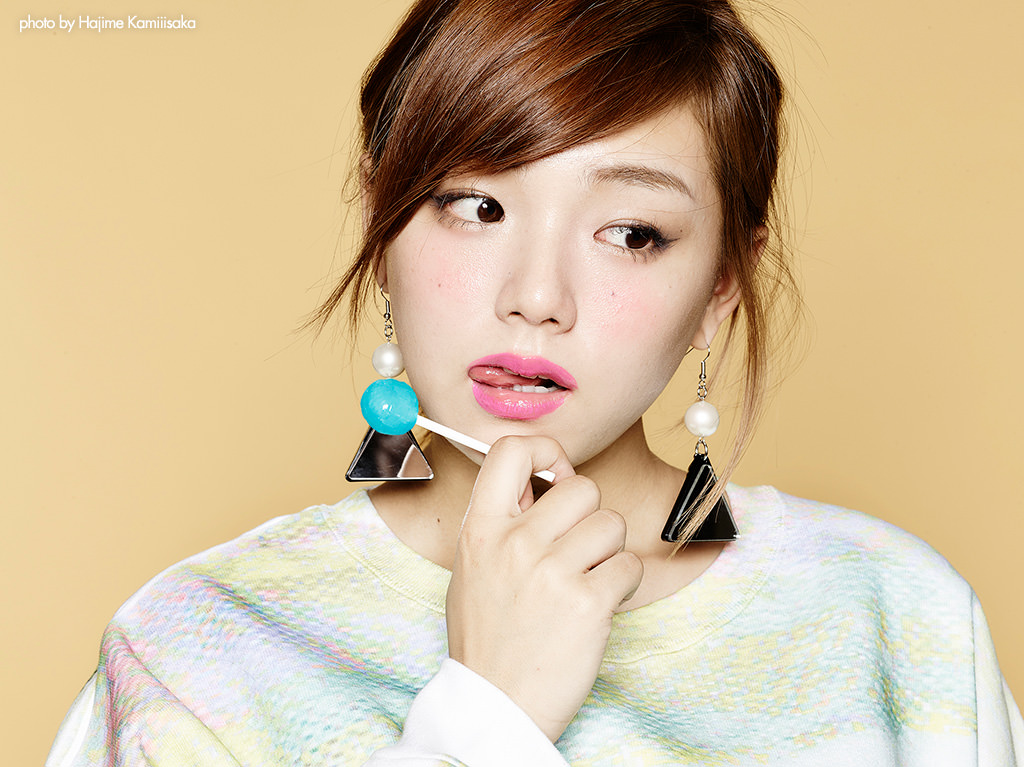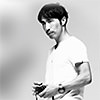Interview with Celebrity Photographer Hajime Kamiiisaka (2): Tricks of the Trade
Professional photographer Kamiiisaka is highly trusted by Japanese pop artistes such as Momoiro Clover Z, Kyary Pamyu Pamyu, and AKB48, whom fans of Japanese pop culture will be very familiar with. In Part 2 of this interview, he gives us some insight into what helps him excel as a professional photographer.

When asked about his secret to remaining at the forefront for so long as a freelance photographer, Kamiiisaka replied that he was just simply doing his job. In Part 2, Kamiiisaka enthusiastically talked about the things he pays attention to as a professional, such as circling the venue where the shoot takes place, as well as the handling of the equipment.
For Part 1 of the interview, please click on the link below:
Interview with Celebrity Photographer Hajime Kamiiisaka (1): From Record Label Executive to Pro Photographer
Always place importance on doing the job properly
- What things do you pay attention to in your job as a photographer?
Kamiiisaka: I place a huge importance on managing my own health. It is difficult to take good photos when you are in poor health. If you catch a cold and become unable to attend a shoot, there is no one to back you up. It is also important to sleep early before a shoot. These might be really obvious things, but they are important.
Also, I try my best to enter any venue early as it is essential to check out the lighting and atmosphere. Obviously, when doing a portrait shoot, you also need to conduct some research to understand what kind of person your subject is. However, it is also important to be able to read the situation during the actual photoshoot. I create a suitable ambience to suit the individuality of each subject.

Pop idol Ai Shinozaki/ Image by Hajime Kamiiisaka
- Advance preparation and creation of the ambience seem very important.
Kamiiisaka: Yes, that is right. Always prepare your equipment properly the day beforehand. This is because the equipment needed differs according to the content of the shoot, whether it be a live concert shoot, portrait shoot, or an advertising shoot. Keeping that in mind, I pack batteries, memory cards, the necessary lenses, and the camera body in my bag accordingly. I also always carry a spare camera. For example, for a portrait shoot of a celebrity, you usually only have 10 to 15 minutes. If any accidents occur, it is necessary to be able to immediately deal with them so that you can complete the shoot within that time. That is because these people often have to head to another shoot or interview immediately afterwards.
- So that moment can make or break of the shoot, right? Is there anything else you pay attention to when you do portrait shoots?
Kamiiisaka: I always carry a hot-shoe flash. In cases where I’m working on a portrait shoot with a female subject, I wear white clothing so that the light will be reflected off it. On the other hand, when doing a shoot of someone wearing glasses or sunglasses, I wear black so that I will not be reflected in the shot. Also, when doing a shoot of a female with long hair, I bring along equipment such as a small blower fan that can create a breeze. It is a handy item for portraits and fashion photos.

A blower fan, one of the examples of equipment Kamiiisaka uses for portrait shoots. Kamiiisaka advises preparing props in addition to the camera and lens, so as to capture a more attractive shot of the subject.
“I use four EOS 5D Mark III cameras at the same time when I do live concert shoots”

Girls’ Generation/ LOVE & PEACE Japan 3rd Tour/ Image by Hajime Kamiiisaka
“It is possible to do a shoot in a venue with a capacity of 50,000 people by yourself, as long as you are able to conceptualise your distance from the artist, the order of the songs, and the image that you want to take,” says Kamiiisaka.
- Do you have any particular habits when it comes to using certain camera equipment?
Kamiiisaka: I use four EOS 5D Mark III cameras at the same time for a live concert shoot. As a rule, I don't change the lens during a live concert because I don't have time and I hate getting dust inside the sensors. I attach a variety of lens on to each of the cameras, ranging from wide-angle lens to telephotos. It takes physical effort to keep shooting for two hours while carrying four cameras.
- Why did you choose to use the EOS 5D Mark III?
Kamiiisaka: I chose it because there is a good balance between its performance and the weight of the camera body. Taking into account how a camera should feel when I place my hands on it, I felt that a full frame camera works best for me. I am always ensuring that I have the most up-to-date camera body and lens.
Incidentally, when the EOS 5D Mark II was replaced with the Mark III, the degree of improvement was so astounding that I felt I couldn't go back to the Mark II. This made me feel that cameras are still in the process of developing.
- What criteria do you use to select a lens?
Kamiiisaka: I prepare lenses according to the photos that I want to take. It goes without saying that I consider my distance from the stage. However I also look at the order of the songs and properly conceptualise the photos I will take before the concert starts. Once the concert gets underway, I shoot accordingly. If I do that I can take a variety of shots on my own, even in Tokyo Dome which accommodates as many as 50,000 people.

The equipment that Kamiiisaka uses for live concert photography. He does his shoot using these 4 cameras, requiring him to carry more than 20kg during his work.
“I would like aspiring young photographers to feel the power of fashion and photography more”

Actor Osamu Mukai/ Image by Hajime Kamiiisaka
- Lastly, do you have any message for young, aspiring photographers in the Southeast Asia region?
Kamiiisaka: I would like them to feel more excitement about street fashion photography. I believe that everyone absolutely has their own preferences on this topic. I also came into contact with fashion at a young age, and that was the starting point for me to personally experience the power of fashion and photography, which is why I would also like the young people of Southeast Asia to feel the same too.
- There are translated fashion magazines, but are you referring to local street fashion instead?
Kamiiisaka: I think web sites and magazines on street fashion are meaningless unless they are made locally. As someone who used to work in the fashion industry, I feel the intense energy surrounding the fashion industry in Southeast Asia. Japanese magazines used to learn from American fashion magazines such as Vogue in the past, so this could easily be done in Southeast Asia now. For example, you can have websites that introduce street fashion through photos of fashionable local youths. Of course for these websites, photos taken with a DSLR camera have a greater impact as compared to those taken with a smartphone. I feel that the nurturing of fashion culture and camera culture goes hand in hand. Compared to the past, it is now easier to create something on online media, so I hope that you can start working on it!
Receive the latest updates on photography news, tips and tricks by signing up with us!
Hajime Kamiiisaka is holding a seminar in Bangkok on 20 & 21 August as a tie-in with Anime Festival Asia (AFA) Thailand 2016.

Details are as follows:
Seminar Title
My life as a fashion and live concert photographer
Venue
Siam Paragon Expo, Seminar Room 4 (same venue as AFA)
Date/Time
Saturday, 20 August 2016: 2pm – 3pm
Sunday, 21 August: 2pm – 3pm
RSVP: AFA.Canon.Seminar@gmail.com
1. Please indicate your preferred date in the subject
2. Please indicate your name and contact details in the message
Spaces are limited to the first 50 participants.
For enquiries, please contact SOZO Asia either through Facebook or their official site.

Entered Epic/Sony Records in 1993, joining the design production division after gaining experience as a promoter and in A&R. Left in 2002 to become an assistant to fashion photographer JFKK, before striking out to take on photography assignments on his own. Since then, he has been active mainly in the commercial fashion, film, music and visual arts scenes.

































